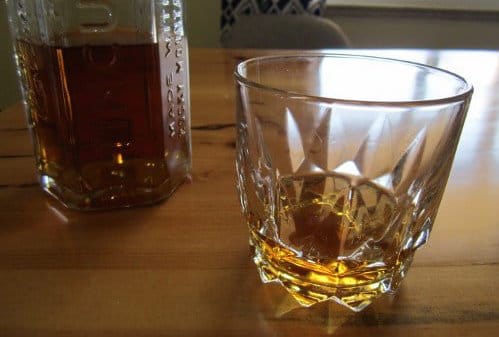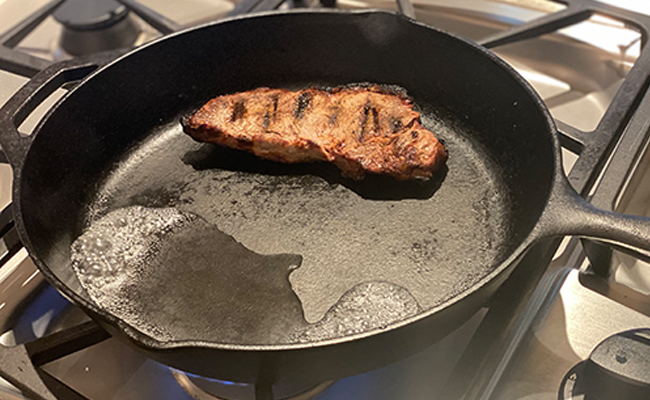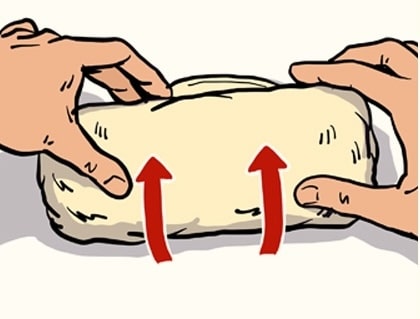
During the past decade, more and more people have started to abstain from alcohol.
Most people do it for health reasons. Alcohol is hard on the body and the mind.
The market has responded to the rise of alcohol abstainers by creating “zero-proof” alternatives that attempt to recreate the taste, aroma, and mouthfeel of popular alcoholic spirits without the alcohol. Today, you can find zero-proof tequilas, gins, and vodkas.
There are also zero-proof whiskeys out there. A lot of ‘em.
Some non-alcoholic whiskeys distill the base grain as in the traditional whiskey-making process, and then remove the alcohol afterward. But most use natural flavors — botanicals and extracts derived from spices, herbs, and grains — to replicate whiskey’s smoky, woody, and caramel notes.
Other ingredients are also added to simulate the taste and experience of traditional whiskey: small amounts of sugar, molasses, or caramel coloring for sweetness and color; tannins or natural acids to mimic alcoholic whiskey’s sharp, mouth-drying effect; glycerin to create its characteristic viscosity and “warming” sensation. Non-alcoholic whiskeys don’t typically undergo traditional aging in barrels, but manufacturers may use wood chips, barrel staves, or oak extracts to replicate the aged flavor.
To find out which zero-proof whiskeys are the best and come closest to matching the oak-aged warmth, subtle smoke, and rich complexity of traditional whiskey, I had my friend and barbell coach, Matt Reynolds, taste-test the whiskey alternatives on the market today.
Besides hoisting weights and running a business, Matt’s a whiskey aficionado who boasts a large whiskey library in his home and has led whiskey tastings for clients.
Here’s Matt’s take on which zero-proof whiskeys take top marks.

Cut Above

Rating: 1/10 Lowest Rated
Cut Above does not go through a traditional distillation process and relies on botanical infusions to achieve its whiskey-esque flavor. Unfortunately, while Cut Above does offer a genuine throat burn, that whiskey-esque flavor was not at all on display; lacking in oak-iness and smoke, it was the most disappointing of the bunch and missed the mark entirely.
Matt’s Tasting Notes:
- “Smells like dirty socks.”
- “Oh, man. That’s terrible.”
Nkd Whiskey Alternative

Rating: 2/10
Nkd (pronounced “naked”) is not traditionally distilled; instead, it’s crafted using flavor extracts and essences. This translucent spirit looked promising but failed to deliver on flavor and tasted more akin to a weak, tap water-y apple cider.
Matt’s Tasting Notes:
- “Industrial pumpkin pie.”
- “It’s got a little bit of oak.”
- “Terrible.”
Lyre’s American Malt

Rating: 2/10
Lyre’s uses a blend of natural essences and botanicals rather than a traditional distillation process. While the nose showed promise with strong molasses notes, the taste and mouthfeel fell short.
Matt’s Tasting Notes:
- “Super molasses-y. Reminds me of Southern Comfort.”
- “Very watery. Really weak, like really weak tea.”
Spiritless Kentucky 74

Rating: 3/10
Spiritless Kentucky 74 is partially distilled, with the alcohol removed post-distillation to preserve some bourbon-like characteristics. Despite being marketed as a bourbon alternative, this product presented more like a rye whiskey in aroma. However, the taste didn’t deliver on the promise of the nose.
Matt’s Tasting Notes:
- “This definitely has more of a rye smell to it.”
- “Tastes like Panera’s iced tea. Like a fruity tea.”
Ritual Zero Proof Whiskey Alternative

Rating: 5/10
Ritual was an interesting entry that stood out for its unique and sophisticated flavor profile. It uses a blend of botanicals and natural flavors rather than the traditional distillation process to achieve its flavor and burn. While Ritual showed promising viscosity, Matt knocked off points for its overly tobacco-forward taste.
Matt’s Tasting Notes:
- “Smells like Beech Nut tobacco. Literally smells like your grandpa that had the big pouches of Red Man.”
- “Tastes like stone fruit, black peppercorn, and prickly ash.”
- “Great viscosity. Good mouthfeel.”
Gnista

Rating: 5.5/10
Gnista is made using a maceration process with botanicals, rather than traditional whiskey distillation. It has a distinctive profile with strong herbal, spice, and root notes (including hints of chocolate rye) but not too much burn.
Matt’s Tasting Notes:
- “Very rooty. Like root beer, sassafras, ginger-ish.”
- “It’s very spiced; tastes almost like a spiced rum.”
Free Spirits

Rating: 6/10 Runner-up
Free Spirits uses a blend of natural flavor extracts and essences rather than a traditional distillation process. It’s strong on the nose with genuine bourbon characteristics. It was particularly notable for capturing whiskey’s oak notes. Matt thinks Free Spirits shows good potential for cocktail applications.
Matt’s Tasting Notes:
- “This smells like bourbon without the burn in your nose.”
- “The mouthfeel is really good on this. It’s still thinner than a real whiskey, but this probably has the closest mouthfeel.”
Monday Zero Alcohol Whiskey

Rating: 7/10 Top Pick of the Tasting
This offering stood out as the clear winner. Monday doesn’t disclose how they make their offering, but Matt thinks they’re using extracts and flavors to get a whiskey flavor, rather than distilling it and then removing the alcohol. The nose presents strong molasses and burnt sugar notes, with a caramel-forward profile. While there’s a slight sourness in the taste (likely from citric acid), it maintains a solid whiskey-like character.
Matt’s Tasting Notes:
- “This is way more like molasses, more like burnt sugar, caramel.”
- “It’s not terrible for sipping, honestly.”
- “The only thing I don’t like about it is it’s a little more sour.”
Key Takeaways
The tasting revealed that while some of these non-alcoholic whiskeys are solid alternatives, they still struggle to fully replicate the complexity and mouthfeel of traditional whiskey. None of them are home runs in that department. While some people might enjoy sipping on some of them (particularly Monday), they’re best employed in cocktails like an old fashioned; Matt recommends going a bit heavier on the bitters to compensate for the thinner mouthfeel.
Matt’s takeaway from the taste test is to manage expectations for what a zero-proof whiskey can be. They can never replicate a real whiskey completely; if you’re expecting that, you’re going to be greatly disappointed. If instead, you drink them with the idea that they’re something that harkens to whiskey but represent an entirely different beverage category, you’ll have a better chance of enjoying the experience.







